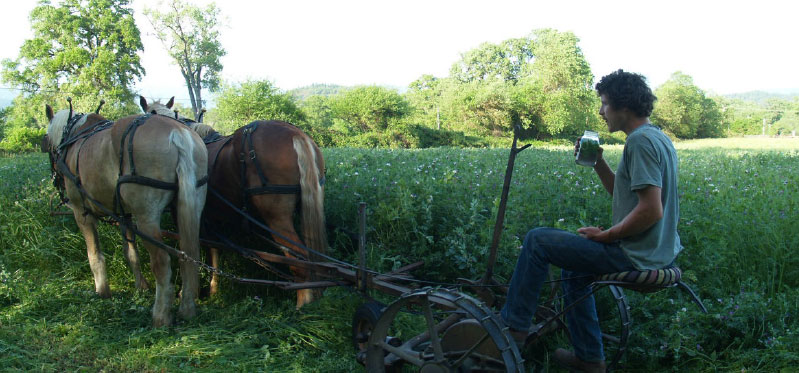Today, in assessing any farm’s real (actual) level of sustainability, we need to look at the farm’s carbon footprint in terms of its energy sources and food production system. Mechanized food production today typically uses 10 calories of fossil energy to produce 1 calorie of food energy and a given food item travels 1500 mi. on average from farm to table. Growing and distributing a pound of potatoes, which uses relatively less energy to produce than other vegetables, in this fossil energy intensive system will result in putting 3 ozs. of carbon into the atmosphere, dangerous pollutants into the soil and water, and accelerate climate change and its worldwide impacts.
Primary energy uses in a farm are tillage power; energy that went into making and transporting compost/fertilizer; energy for growing, harvesting and transporting animal feed; water pumping, refrigeration, water heating and transportation. LPCF’s goal is to use clean renewable solar energy to provide the power for as many of these uses as possible. Reaching this goal is an ongoing and evolving effort. Presently we are producing at least 90% of our animal feed requirements on the farm, transporting it only within the farm, and feeding it all on the farm. This feed is also the energy source for our draft horses who perform the tillage for 4 ac of vegetables, 2 ac. of grain , and about 4 ac. of annual hay crops each year, in all tilling about 10 ac. a y ear as well as spreading compost, mowing cover crop, and doing transportation and many other chores within the farm. Our compost for maintaining soil fertility is also made from materials (straw, manure, and green materials) generated on the farm and does not require outside energy use and pollution for collecting materials, manufacturing the compost and then transporting it to the farm for use.
Carbon sequestration
We try to cover crop as extensively as possible to capture nitrogen and build organic matter for direct incorporation into the soil. Doing these processes within the farm organism not only produces a healthier higher quality soil and food, but also saves a huge amount of carbon and environmental pollution. Our current 18kw PV system allows us to do most of the water pumping and other farm mechanical needs with the solar electric power of the sun. We recently installed new inverters which give a read out of the amount of carbon saved from going into the environment by replacing fossil energy electrical generation with solar electric generation. In the current month of April, each day we are saving about 200lbs. Permanent grass pasture also sequesters carbon in the soil at the rate of a little over 1 ton per acre, per year. We typically have at least 20-30 acres of the farm planted in pasture or grass crops each year, resulting in sequestering 20-30 tons of carbon in the soil and keeping it out of the atmosphere.



